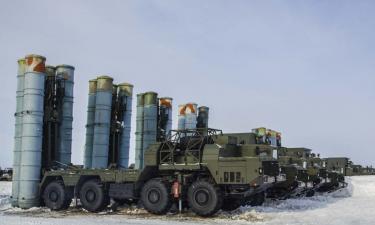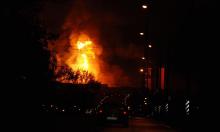Peru inaugurates devastating gas plant in the Amazon
 The Camisea project meant to export natural gas to the United States may ruin one of world’s largest biodiversity areas, according to environmental groups.
The Camisea project meant to export natural gas to the United States may ruin one of world’s largest biodiversity areas, according to environmental groups.
The government says it will boost economic growth and improve quality of life among Peruvians.
In an attempt to boost his poor image shattered by corruption scandals and popular protests, Peru’s President Alejandro Toledo travelled deep into the Amazonian jungle to open a pipeline linking country’s vastest gas field to the capital, Lima. The Camisea gas plant, meant to export natural gas to the United States and Mexico in the near future has sparked angry protests amid the indigenous population in the area and environmental groups as they say it is ruining the Amazon rainforest.
According to an official report from Peru’s Ministry of Health, the gas pipeline puts in serious risk the survival of entire Indian tribes. The reason, the pipeline goes through an Indian reserve meant to protect large communities, and the contact of these groups with workers has sparked diseases among these populations.
Taking a blind eye to such denounces, the government says the project will boost economic growth and make Peru a net exporter of energy. The gas will be for industrial and residential use, reducing energy costs for businesses almost immediately and providing cheaper, cleaner energy for thousands of ordinary Peruvian within a couple of years, say specialists.
Also, as he inaugurated one of the most ambitious projects in South America in decades, President Toledo said Camisea would bring billions of dollars in revenue to Peru. However, that’s not clear, as most of the utilities will go to the pockets of the multinational consortium that built the plant from Argentina, South Korea and the United States.
Amazon Watch says on its web site that “Peru's Camisea Gas Project is currently the most damaging project in the Amazon Basin”. Located in the remote Urubamba Valley in the south-east Peruvian Amazon, the $1.6 billion project includes two pipelines to the Peruvian coast •cutting through an Amazon biodiversity hotspot described by scientists as ‘the last place on earth’ to drill for fossil fuels.
According to this group, “nearly 75 percent of gas extraction operations are located inside a State Reserve for indigenous peoples living with little or no contact with the outside world, who have been forcibly contacted by the Camisea consortia in violation of their internationally recognized rights”.
For the final phase of the project estimated to cost an additional $1-2 billion, Texas-based Hunt Oil will construct a plant to liquefy natural gas for export to the United States. Kellogg Brown & Root, a unit of Halliburton, is in line to build it. Half of Camisea's gas will be shipped to the United States to supply clean West Coast energy markets.
Hernan Etchaleco
Subscribe to Pravda.Ru Telegram channel, Facebook, RSS!





